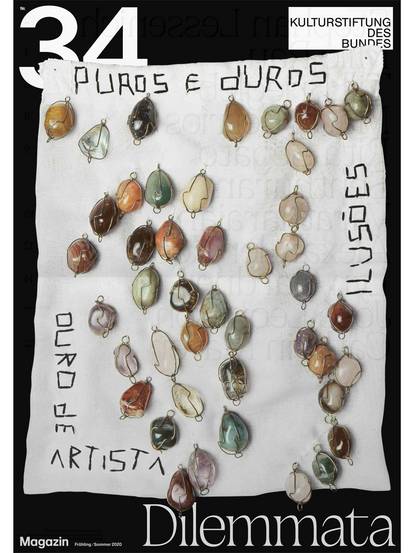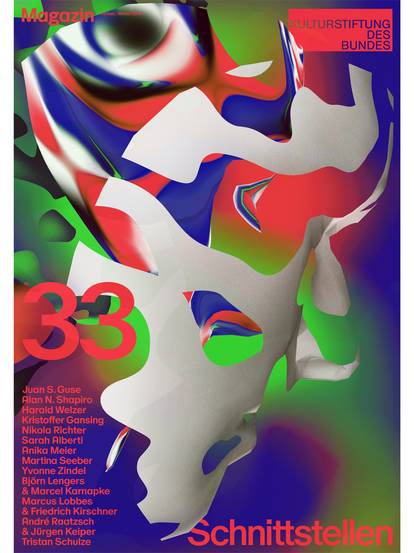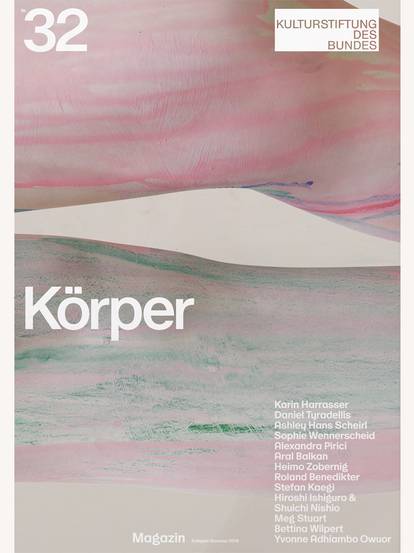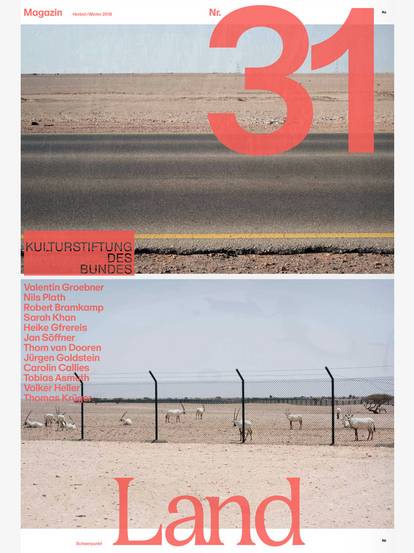It feels like a scene from one of those bad dreams. The artist Andy Picci, completely clad in black, finds himself in a brilliantly white room. He sits there, looks around and tries to comprehend his situation. Hesitantly, he calls out “Anyone there?”. No answer. He lies down, waits, he seems to float in the white room. Eventually he gets nervous because nobody’s coming, no one’s answering him. He stands up, runs around, fights for breath. He falls to the floor in desperation. “Please!” he pleads again and again, “Please, let me out!” Still no answer. The end.
“Let me out”, is also the title of this almost eight-minute video. Once you know that the French artist Picci is referring to the influence of digitalisation on society, it quickly becomes obvious what the white room is supposed to represent. Smartphones and social media initially arouse a feeling of curiosity, one looks around, tries things, feels unobserved. What follows is a sense of uncertainty about what is going on. Likes, followers, attention, affirmation. What it does to people – making them dependent on and addicted to self-presentation.
The economist Shoshana Zuboff uses the term “surveillance capitalism” to describe the developments in the digital age. In her book The Age of Surveillance Capitalism, she writes: “Digital connectivity is now a means to other people’s business objectives. At its core, surveillance capitalism is parasitic and self-referential. (...) Instead of labor, surveillance capitalism feeds on every aspect of every human experience.”
People share their experiences in social media. They seem to conscientiously document and share every minute of their day from the moment they open their eyes in the morning to their last dance at the disco. A “day in the life” is often meticulously planned to ensure maximum “Instagrammability”, presenting the perfect image of a perfect life to friends and followers. Once upon a time, people used to complain that photos taken by tourists were unoriginal with each one looking exactly like the next (the Eiffel Tower, Leaning Tower of Pisa etc.). Today, this generally holds for most photos posted on social media. What used to be the message of holiday photos (I was there, I did that) now applies to every second of the day: I was in bed, I woke up, I drank coffee. If someone tried interpreting images shared on social media in art-historical terms, they obviously wouldn’t get very far. It would mean ignoring the fact that photos in social media do not represent objects being shared, but rather experiences. As Nathan Jurgenson sums up in his book The Social Photo: On Photography and Social Media, “the center of conceptual gravity for describing how people communicate with images today should be less art historical and more social theoretical.“ Jurgenson’s basic premise is that “social photography” has no ambition whatsoever to compete with conventional photography. That is the big misunderstanding.
There are plenty of misunderstandings when it comes to social media. Especially when art is in play, since art should only take place where we are accustomed to seeing it: in galleries, museums, biennials and festivals. For instance, in an article published in Die Welt, the art critic Swantje Karich wrote that “the beauty of Instagram is the fake innocence in ‘everyone’s pretending it’s art.’.” But who is pretending here? Some communicate and other do art or communicate about their art. Karich presents a small thought experiment: What would happen if we all started interchanging Instagram with art? Her answer: “Everyone would call themselves artists and print out the Internet like the first bloggers who used to complain about reality and then started publishing one book after another. The beauty of Instagram is how silently it is forgotten again.” The beauty of Instagram is also the diversity of its potential uses: food bloggers show food, fashion bloggers clothing, travel bloggers take trips, fitness bloggers show off muscles, book bloggers present books and artists show art.
Meanwhile, artists are increasingly annoyed by the those who claim there is no art on Instagram. And if critics do recognise art on Instagram for what it is, they describe the artists as “Instagram artists”. A writer, such as Clemens Setz or Saša Stanišić, who use Twitter to share prose miniatures, would never be called a “Twitter author”. Incidentally, Amalia Ulman is credited with creating the first Instagram masterpiece. In the social network, users tend to share the highlights of their lives – smoothies and avocado toast, hours at the fitness studio, their hot figures in front of the mirror. When Ulman portrayed this stereotype in a five-month performance in 2014, which she presented as genuine, Instagram was no longer a new phenomenon. But it hadn’t yet become the platform of countless young women promoting their sponsors’ products to millions of followers. We are all liars online in a performance of perfection and success. And Amalia Ulman, the artist, participated in this performance doing exactly what she had previously identified as female stereotypes in social media – the somewhat boring Tumblr Girl dressed up in Urban Outfitters clothing. The Hot Babe with her Sugar Daddy. The Instagram Girl who is into superfoods and yoga. Ulman was able to imitate these three stereotypes because she had created a narrative for her persona with corresponding dreams and wishes, successes and setbacks and a happy ending. Consequently, Amalia Ulman is also described as an “Instagram artist”. Her response (Monopol 3/2018) to this: “I am an artist. I use Instagram because it’s the most commonly used platform. If I had come earlier, I might have used a chatroom. What I do is simply web art. And performance. And photography. It’s art.”
Back in 2016 the American writer Natasha Stagg described the fast track to fame and success in social media in her novel Survey. Today, everyone talks about influencers and self-branding. Teenagers on Instagram present themselves in the best light possible for all the world to see, they want #instafame, they see themselves as a brand that needs to be established and promoted. In Stagg’s novel, the main character Lucinda, an aspiring influencer, writes a seven-page essay on the future of fame. She asserts that “in the future, no one will want to be famous, in the way that no one wants to be exploited. We will all aspire to be less and less known as we grow up.”
When Instagram first launched in 2010, no one knew for sure how the social network would develop, as it was originally conceived as a platform for presenting photos in a vintage look. With Polaroid-style snapshots, people could show their friends how nice it was here and there. It quickly became evident that with the right content, it was possible to collect followers and likes – which initially had a pleasant effect on the mind. And soon afterwards, it became clear that if you did everything right, you could earn money with followers and likes.
The Atlantic recently reported that influencers themselves are no longer interested in the typical Instagram aesthetic and are looking for something more authentic. The article entitled “The Instagram Aesthetic Is Over” featured influencers taking photos of themselves in front of brightly coloured walls or random pop-up museums, dragging heavy camera equipment to the beach, doing things with long fingernails and coffee cups. Nobody cares to see that anymore – a verdict confirmed by those who work at the influencer marketing agencies. A few days later, Quartzy published the piece “The Age of the Influencer has Peaked. It’s Time for the Slacker to Rise.” Even posts by private individuals read like mini press statements. People longingly recall the 1990s when nobody was monetising their lifestyles or getting into bed with brand names. And today? “Nothing is sacred, art has been replaced by content, and everything is for sale,” claims the writer of the text. Eventually the time comes when people have had enough of self-optimisation, when they find it distasteful to cosy up with corporate interests. Indeed, the prediction of Stagg’s fictitious influencer in 2016 is now becoming reality.
Artists on Instagram have their finger on the pulse of the times. Their concepts and criticisms change as fast as the social trends they reflect upon. The German concept artist Andy Kassier, for example, portrays male stereotypes on Instagram. His fictional character of the same name is rich, successful and always finds himself where the sun shines and money falls like rain. Kassier’s motto: “Success is just a smile away.” If you didn’t know his persona was an extended performance, you might think Kassier is just another guy who can’t stop dishing out motivational sayings and goes on holiday just because he can. Like Kassier, the Belgian artist Tom Galle criticises the digital age with self-irony. He deliberately destroys Apple devices or uses them inappropriately, for example, taking photos with a MacBook on a selfie stick and wearing iPhone boxes as sandals. He crafts weapons from the logos of big corporations like Facebook, Mercedes and Nike and poses with them in glossy-format advertising photos. Galle criticises capitalism on a platform that supports capitalism. With his new piece on Instagram, he reacts to the rancorous discussions on climate change. Text panels with supposedly “deep” motivational thoughts are likeable content on Instagram. Galle plays on the disconnect between such texts and images, for example, illustrating that “Difficult roads often lead to beautiful destinations” with a photo of a forest fire.
The American artist Leah Schrager, known by the pseudonym Ona on Instagram, shows how intimacy has become marketable in times of social media, how female sexuality is changing, how women degrade themselves to appeal to men. Ona has over three million followers, and her account is growing by 10,000 followers a day – enough to earn a living. The art world doesn’t accept her, though, because she blurs the boundary between art and pornography. That’s why she decided to end her career as a sex-positive performance artist last year. On her account @leahschrager she has presented a new performance since October 2018: Schrager accepted the support of a male sponsor who agreed to invest a million dollars in her art for one year. She placed her fate in the hands of man who wants to help her achieve success in the art world by deciding which images are suitable. Like Stagg’s fictitious influencer, Schrager is no longer content with #instafame and millions of followers; she wants recognition and success as an artist outside of social media.
Female artists – like influencers – are far from turning their backs on social media. They remain and intend to stay where their audience is. In the beginning, there were websites, then blogs, and eventually Instagram outpaced Tumblr. A new platform is nowhere to be seen on the horizon, but augmented reality represents a new technology which Instagram integrated on the platform Spark AR. Artists like Andy Picci have already reacted to the new wave of self-imaging which AR face filters have made possible. Even the likes of Heidi Klum and her husband Tom Kaulitz have showed pics of themselves with floppy dog ears and wet muzzles. Picci uses these filters – which he calls Self-Centred, Fame and Behind the Mask – to comment on the desire of many to be seen at any cost. In one filter, for example, a smartphone flies around your face, on which a sticker is affixed, reading “Social Media Seriously Harms Your Mental Health”.
“Please, let me out!”

![[Translate to English:] Magazine 38](/fileadmin/_processed_/f/1/csm_Magazin38_Cover-Vorschau_921x1230_689f428dc3.jpg)
![[Translate to English:] Magazine 37](/fileadmin/_processed_/b/c/csm_Mag37_Cover-Vorschau_921x1230_b5129fdb2a.jpg)
![[Translate to English:] Magazine 36](/fileadmin/_processed_/2/a/csm_Cover_Magazin36__issuu_2f3cef97bb.jpg)





![[Translate to English:] Magazine 30](/fileadmin/_processed_/c/b/csm_magazin30_vorschau_9005f773d3.jpg)














